This is the ultimate backpacking checklist.
In this comprehensive guide I’ll cover: 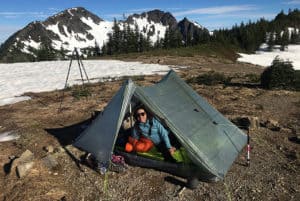
- Every item needed for backpacking
- How to choose the best gear
- The 10 backpacking essentials
- Lots more
So, if you wan’t to have the best possible time backpacking you’ll love this guide.
Don’t have time to read the whole guide right now?
No worries. Let me send you a free PDF copy so you can read it when it’s most convenient for you. 🙂
Emails are never shared. Unsubscribe at any time.
Page Contents
- Backpacking Essentials Video
- Backpack
- Backpack Cover
- Backpacking Tent
- Sleeping Bag
- Sleeping Pad
- Stove and Fuel
- Food
- Food Storage
- Water Bottle & Reservoir
- Water Filter or Purification
- Cookware and Utensils
- Hiking Shoes or Boots
- Trail Socks
- Clothing: Weather Appropriate
- Headlamp
- Navigation: Map, Compass, GPS
- First Aid Kit
- Emergency/Repair Kit
- Knife
- Sun Protection
- Bug Protection
- Backpacking Permit
- Personal S.O.S Device
- Hygiene Items
- Trekking Poles
- Optional Items
- Luxury Items
Backpacking Essentials Video
Watch the video below to see what gear I personally bring into the backcountry.
Check out my Ultimate Gear List to read more about the gear I find to be the very BEST.
Backpack
Make sure you buy a lightweight bag. Under 3 pounds.
Unsure about how big your backpack should be?
The 50 to 70-liter range is the sweet spot for most people.
Frameless, internal or external frame?
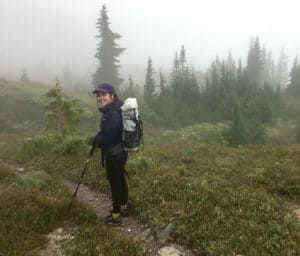
- Frameless bags are ideal if you rarely carry loads of more than 20 pounds. I used a one when I thru-hiked the Pacific Crest Trail.
- Internally framed bags provide the BEST combination of comfort and support.
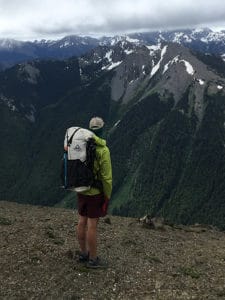
- External frames seem to pair well with OLD SCHOOL HIKERS. Stay away from these.
Stay AWAY from backpacks with unnecessary features like these:
- Excessive pockets & zippers
- Unneeded straps
- Too many storage compartments
Why these extras SUCK:
- They add extra weight to your bag
- Increase the number of possible failure points
- Fully waterproofing the contents of your bag becomes a challenge
- The organization of your gear actually becomes more difficult
Unfortunately:
Most first time buyers are attracted to the bag with the most features.
Using a few stuff sacks to organize your gear is a MUCH more versatile option.
Having only ONE big internal pocket allows you to fully waterproof all of your gear with a lightweight trash bag.
PRO TIP: Buy LIGHT WEIGHT gear.
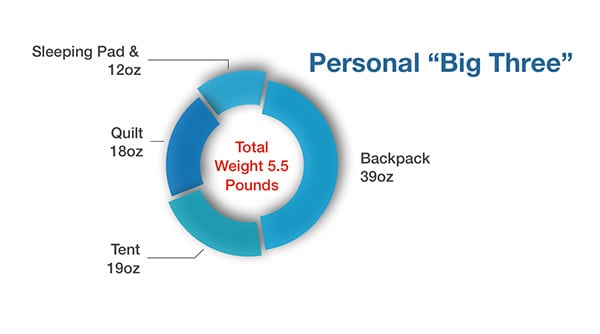
The best place to start?
“The Big Three”
- Backpack
- Shelter
- Sleeping bag & pad
They are called the big three because they are typically the BIGGEST, HEAVIEST, & most EXPENSIVE pieces of gear.
A scenario I see time and time again: (I DEFINITELY did this)…
• You buy a new gear set up NOT worrying about weight.
• Your first trips are all 2-3 days and you have no issues.
• Naturally, you decide to do a longer more demanding trip. (Maybe the Wonderland or John Muir Trail.)
• You get out there and on day 4 you are WRECKED.
• Not only are you carrying the same heavy gear…
You’re also carrying EXTRA FOOD and maybe a BEAR CAN that you had never carried before.
Join the 1,000 + Member Backpacking Community. 🙂
Emails are never shared. Unsubscribe at any time.
A light base weight enables you to:
- Hike more miles & back to back days in JOY
- Carry more food on longer trips
- Bring more luxury items
- Hike safer across log crossings, creek fords or uneven ground
Don’t go “Stupid Light”
Never sacrifice your safety by leaving any of the backpacking essentials behind.
Backpack Cover
If you plan on hiking in any rain you will want to make sure that your gear stays dry.
Backpack covers can help but they are definitely NOT full proof…
PRO TIP: Line the inside of your bag with a large trash compacter sack to fully protect your gear.
This will ensure that all of your gear stays 100% dry.
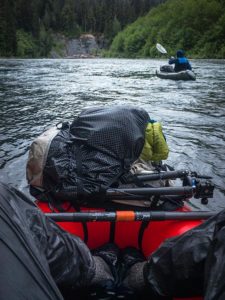
This can be an addition to a pack cover or your ONLY form of waterproof protection.
It’s the only form of water protection I ever use.
Backpacking Tent
Your shelter should protect you from all elements and have you excited to stay another night inside.
PERIOD.
3 season backpacking shelters come in many forms:
• Freestanding double wall tents – Easiest to set up and perform well in almost all conditions.
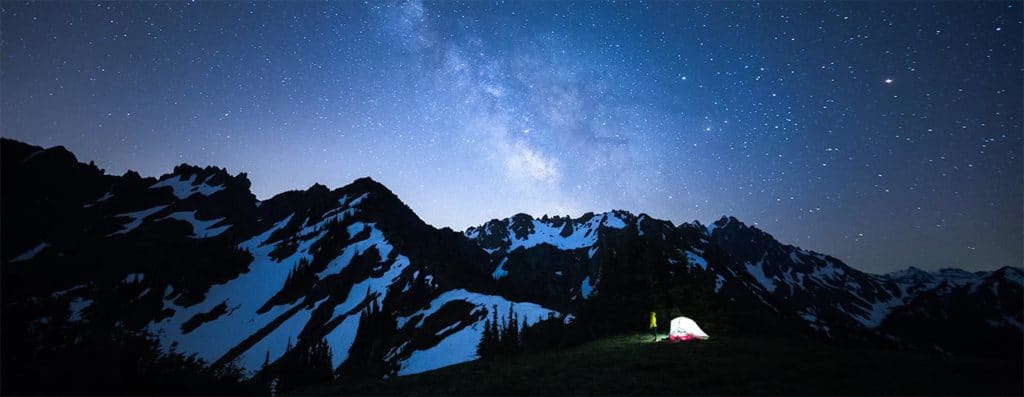
- Single wall non-freestanding tents – Lightest fully enclosed style of shelter.
Best suited for Thru-Hikers and experienced hikers looking to really cut down on weight.
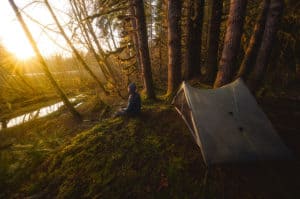
- Bivies – Take up little ground space and are ideal for cowboy camping.
Make sure you have a tarp for added rain protection.
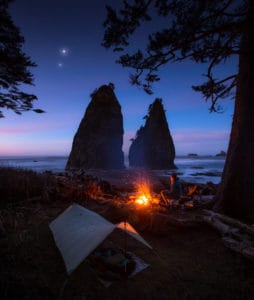
- Hammocks – Trees, a tarp, bug netting, and an under quilt are needed for a complete setup.
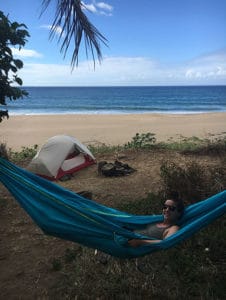
- Tarps – Lightweight, versatile, well ventilated.
I have used all forms of these shelters extensively…
Unfortunately, I haven’t found a single shelter that performs ideally in all conditions.
I still own a version of everything mentioned above and use them accordingly.
If you are new to backpacking and unsure, I’d recommend buying a double walled tent.
Make sure you do your research and look at the dimensions of the shelter you’re thinking about purchasing.
A “2 person” tent might realistically be a “1 person” tent.
• On the very minimal end, you will want to have at least a few inches of extra space on all sides of you when you are fully sprawled out.
• Being pressed up against any wall is a guaranteed way to get wet from condensation if the right conditions present themselves.
How much living space do you want?
• Just enough room for you?
• You and a partner?
Do you want to store your gear inside?
• Personally, I like to keep my gear inside my tent and have plenty of room to move around.
• I also lOVE to be able to sit up without my head hitting the top of my tent.
• This is especially nice if I’m TRAPPED in my tent waiting out a storm.
Planning on sharing a tent with a partner?
• Make sure it has doors and vestibules on both sides.
PRO TIP: Buy the BEST GEAR you can afford.
I know this can be tough starting out…
Keep this in mind:
When it comes to backpacking gear, you usually get what you pay for.
High-quality gear can last a lifetime.
Sleeping Bag
Choose a bag that is rated for the temperatures you plan on sleeping in.
Unsure and can only buy one bag?
• A GOOD rule of thumb is to go with a rating of 20-degrees Fahrenheit.
• In colder temps you can supplement your warmth with extra clothing layers.
Backpack frequently in various temperature conditions?
Having multiple bags might be in your best interest.
For Example:
• I own a 30-degree quilt I primarily use in the Spring and Summer.
• I also own a 10-degree quilt I use in the Fall and early Winter.
• When temps get extremely cold I double up both quilts.
This keeps me plenty warm when the temps drop below 0-degrees Fahrenheit.
Traditional Mummy Bag or Quilt?
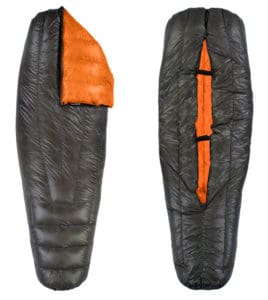
Benefits of a Quilt:
- Quilts are typically 20-30% lighter than a mummy bag
- Less restricting, great for side and rotisserie sleepers
- Easier to regulate heat when it’s warmer outside that the rating of bag
Benefits of a Mummy Bag:
- No cold air drafts
- There is a hood to keep your head warm
For me, the benefits of the quilt far outweigh those of a mummy bag.
Synthetic, regular down, or treated down?
Synthetic fill:
- Heaviest
- Does not compress as much as down
- GREAT option for those on a budget
Regular down:
- Lightest option
- Loses all loft when wet (This can transform your bag into a DEATH TRAP)
Treated down: One of the best gear innovations in our time.
Essentially regular down coated in a waterproof repellent before it is stuffed into the bag.
It will keep you WAY warmer than regular down if it were to get wet.
Treated down is the clear WINNER.
I always try to buy treated down products if I have the option.
PRO TIP: This One is for Couples That Backpack Together.
Get a 2 person sleeping bag or quilt.
The weight of a 2 person sleeping set up is much lighter than your 2 bags combined.
Plus you get to share body heat and tent snugs 😉
Sleeping Pad
Your sleeping pad is going to keep you insulated off the cold ground.
• It doesn’t matter how warm your sleeping bag is if you don’t have the proper pad under you.
• How well a pad insulates you is measured by the R-Value of the pad.
• The higher the R-Value the warmer you will be.
You have two main choices:
- Foam Pad
- Inflatable Air Pad
Most people find inflatable air pads to be much more comfortable.
PLUS they usually have a higher R-Value.
Closed cell foam pads do excel in a few areas though:
- Puncture resistant
- Easier to set up
- They cost less
- Can be sat on around camp or during breaks.
PRO TIP: Buy From Companies That Stand Behind Their Gear.
If a piece of gear is not backed by a warranty you should really question its quality.
Even the socks I hike in have a lifetime warranty.
Stove and Fuel
If you enjoy hot food and warm drinks you’re going to want a stove.
A stove also turns into an ESSENTIAL RECOURSE if you need to melt snow for drinking water.
Hot soups and drinks boost morale and body warmth in cold conditions.
Different kinds of backpacking stoves:
• Liquid fuel stoves: Connect to refillable bottles and can be filled with white gas and other alternative fuels.
If you are traveling abroad or somewhere fuel canisters are not available this might be your best best.
• Alternative fuel stoves: Wood, pellets and other forms of burnable material are used as fuel.
IDEAL for the survivalist.
• Canister fuel stoves: The most POPULAR stove with backpackers.
These stoves are lightweight & easy to use. They screw on to the top of propane/isobutane fuel canisters.
There is an increasing number of hikers going stoveless and “cold soaking” their meals.
My Stoveless Backpacking Guide covers this topic extensively.
PRO TIP: Bring a little more fuel than you think you might need.
And NEVER use your stove inside your tent.
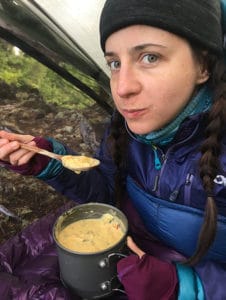
Food
The best foods for backpacking share these characteristics:
- High energy
- Take up little space
- High caloric value
- They taste good
There are a million different ways you can go about food.
My best backpacking food guide gets into all of the details.
PRO TIP: Bring 2/3 the amount of food you think you might need.
Food Storage
Does the thought of a bear tearing into your tent to get your food scare you?
It shouldn’t because you store your food properly.
NEVER store food in your tent or leave it unattended.
Not even for a minute.
Critters, animals, and birds are smart and opportunistic.
Often they are watching and waiting to pull a SNEAK ATTACK.
Common food storage methods:
- Hang from a tree in a stuff sack
- Ursack bag
- Bear can
Some areas have bear wires or metal food storage bins at camp that can be utilized.
Many areas require food to be stored in a bear can.
PRO TIP: Store your food in a scent proof Loksak Opsak Bag.
This is an addition to your stuff sack.
If an animal can’t smell your food, to begin with, you’re ahead of the game.
Weighing less than an ounce makes this a backpacking essential for me.
I have been using these bags since 2011 and have never had an animal get into my food.
Water Bottle & Reservoir
You will most definitely want a bottle to drink out of.
Approximately one liter in size seems to be the golden standard.
Often carrying more than one liter of water is necessary.
In addition to my water bottle, I carry (2) 2-liter water bags.
This enables me to carry up to 5 liters of water in total.
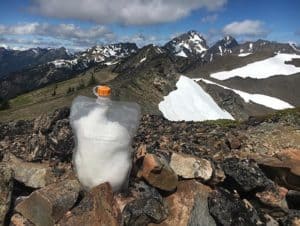
What about water bladders such as a CamelBak?
Some people really enjoy being able to drink water directly from a tube attached to a water bag inside their backpack.
Understandable, just be aware of this.
Your water bag can spring a leak potentially causing all of the gear in your bag to become wet.
I’ve seen this happen. NOT GOOD
Also, the water inside of your hose will FREEZE up if its to cold out.
PRO TIP: DITCH the Nalgene Bottle for a Tall “Smart Water” Style Bottle.
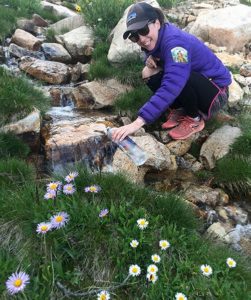
One of the lightest bottles available, weighing only a fraction of what a Nalgene bottle weighs.
Just as REUSABLE.
Its tall, slender design makes it easier to grab from the side pouch of most backpacks while hiking.
PLUS its cheap & you get some free electrolytes.
Water Filter or Purification
This video shows how I store and treat my water
Filtration vs Purification?
Filtration removes bacteria from water while purification fights viruses in water.
What does this mean to you?
• If you are backpacking in the US or Canada a filtration method will usually treat your water effectively.
• If you are traveling abroad a purification method such as UV light or chemicals is your best bet.
• Be wary of any pump style filters with moving parts. I’ve seen many fail out in the field.
PRO TIP: Carry water purification tablets in your emergency kit as a backup to your primary water filter.
Bringing water to a boil is also an effective form of purification.
Cookware and Utensils
This category is going to vary depending on the style of cooking you do.
Only cooking freeze-dried meals or one pot meals?
A pot & spoon or fork will have you covered.
If you are into cooking more extravagant meals on the trail you might want a few more items.
PRO TIP: A long Spoon is Your Best Friend.
Makes getting into the bottom of your freeze-dried meal or Jetboil cup much more enjoyable.
Hiking Shoes or Boots
I find lightweight trail runners to be the best form of footwear for almost all forms of hiking.
The only exception to that would be in winter conditions.
Trail runners are:
- Extremely comfortable
- Breathable
- Lightweight
Feet love these attributes.
They also dry out extremely fast once wet and can be left on while fording creeks.
Some prefer wearing boots for added ankle support.
Either way, size up 1/2 – 1 full size from what you normally wear.
Your feet swell up during the day as you hike and having some extra room is critical.
If your toes jam into the front of your shoe while hiking downhill…
You might be returning home with a missing toenail and some trophy blisters.
Optimal footwear varies from person to person. Almost more than any other piece of gear.
PRO TIP: Once you go trail runners you never go back.
Don’t object unless you have tried both options out.
Trail Socks
I take 3 pairs of socks on most of my trips.
I hike in the thinnest wool socks available to prevent blisters. 2 pairs that I can alternate between throughout my trip.
Dry feet are happy feet!
One pair of socks is always kept dry and clean. They are reserved for sleeping only.
If I plan on being in temps below freezing I will trade out the thin wool socks for something thicker.
PRO TIP: Look into Darn Tough socks.
They have a lifetime warranty. No joke.
Clothing: Weather Appropriate
An appropriate layering system is essential in the backcountry.
Going with multiple lighter layers instead of a single thick or bulky layer.
This enables you to better adapt to a wider range of conditions.
Layers can be removed or added according to the weather and exertion level at any given time.
Your layers should compliment one another.
If the conditions demand, you should be able to comfortably wear all of your clothing simultaneously.
My layering system:
Base:
- Antimicrobial Boxers
- Button-up Shirt
- Hooded Fleece
- Merino Wool Leggings
- Merino Wool Beanie
Insulation:
- Thicker Hooded Fleece
- Hooded Down Jacket
- Down Pants
- Gloves
Outer:
- Running Shorts
- Hiking Pants
- Wind Pants
- Rain Pants
- Rain Jacket
- Umbrella
- Rain Mitts
- Sun Hat
This is my entire layering selection.
Depending on the conditions I may LEAVE a few of these items at the house.
PRO TIP: Don’t bring an extra shirt or pair of undies to change into on your trip.
I see a lot of beginners do this.
UNNECESSARY weight & hassle.
Buy clothing with antimicrobial properties instead and enjoy the scent you worked so hard for.
Small Backpacking Essentials
I keep all of my small essentials in my pack pod that’s always easily accessible.
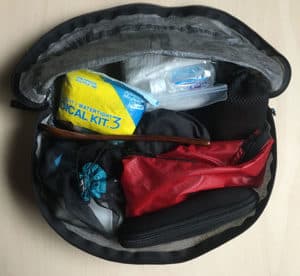
Being able to grab this bag while taking a break or being in my tent is…
MUCH more convenient than rummaging through compartments of a backpack.
Let’s break my bag down a bit…
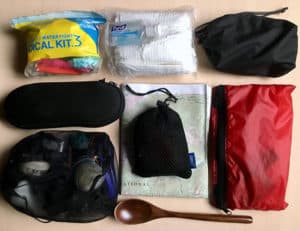
Let’s break it down a little more…
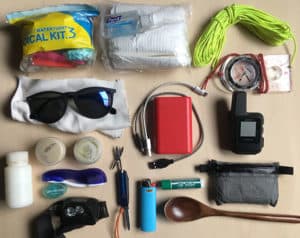
I bet you’re wondering whats in my customized first aid/repair kit?
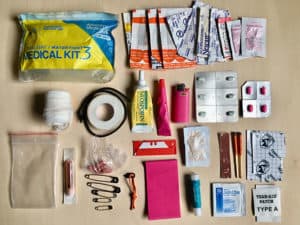
Wow, I really opened up to you guys!
Be The First to Know When I Release New Backpacking Guides 🙂
Emails are never shared. Unsubscribe at any time.
Headlamp
Not planning on doing any hiking at night?
You should still carry a headlamp.
A headlamp can help you find your way to the bathroom at night and could save you in an emergency situation.
Make sure your batteries are charged before you leave the house. As a safety precaution bring an extra set.
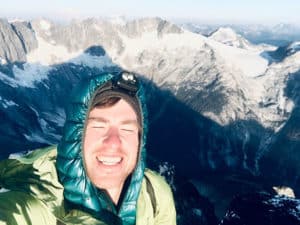
PRO TIP: Use a headlamp with a rechargeable battery.
This especially makes sense if you are carrying an external charger on the trail already.
I’ve used my headlamp extensively for 2+ years now with no issues and am still only using the original USB rechargeable battery it came with.
NEVER hit the trail without & compass.
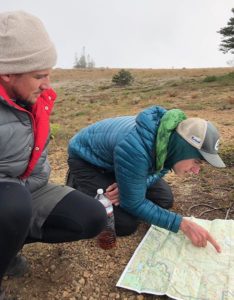
Make sure you learn how to use them proficiently before you go out.
Getting lost happens easier than you might think.
I have been there before and it can be terrifying.
I like to supplement my map and compass with a GPS.
Don’t purely rely on a GPS.
Electronic devices can and do fail. Having both options is the best bet to ensure you make it back home.
The Gaia app on my phone is my go-to for GPS.
It has multiple map layers you can switch back and forth between.
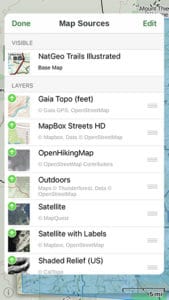
I can also save key GPS waypoints.
If you use this app, don’t forget to download the maps of the area you will be hiking into before you lose phone service.
I use various paper maps.
When I can’t buy a specific map I print one off at home and laminate it with contact paper.
PRO TIP: Always tell someone close to you exactly where you will be backpacking and when you plan on being back.
Tell more than one person to further increase your odds of being helped in an emergency situation.
First Aid Kit
Always carry a first aid kit.
I carry an Adventure Medical KitsUltralight/Watertight .3 Medical Kit.
PRO TIP: Customize Your Kit.
Some extras in my personal kit:
- Ibuprofen
- Anti-diarrheal pills (Imodium)
- Antihistamine pills
- Super Glue
- Neosporin
- Safety pins
- Electrolyte tablets
(Disclaimer: These first aid items are what I carry. I’m not specifically recommending them for others. Be sure to consult with your physician before taking any medication)
Emergency/Repair Kit
Be prepared for the unexpected.
What’s in my kit?
- About 10 feet of duct tape.
- A few squares of tenacious tape (Great for patching holes or tears in your jacket or tent).
- Sewing needle/floss
- Patch kit for the air mattress
- Ceramic utility blade
- Fire starters- 2 Bic lighters & waterproof matches
- 50′ 2mm Dyneema cord
- Whistle (integrated into my backpack sternum strap)
- Small business card with personal information & close contacts
Knife
A knife is one of the most VALUABLE tools in your bag.
PRO TIP: Get Yourself a Mini Swiss Army Knife.
Whether it’s your primary knife or just a supplement to something larger.
This knife has a multitude of uses and weighs less than an ounce.
Mine is always with me.
The scissors are great for cutting tape or patches.
The tweezers save the day pulling out thorns or ticks.
This is the ONLY knife I ever carry with me unless I plan on having a fire in wet conditions.
Sun Protection
Best forms:
- Your Clothing: Long sleeve shirts & pants are one of the best forms of sun protection.
- Sunscreen: A carry a small bottle to use on my face.
- SPF Lip Balm
- Sunglasses: Make sure your shades block out 100% UV Rays.
- Hat: Bonus if it shades your neck, ears, and face.
- Umbrella
The umbrella only makes it in my bag for sun protection in extreme conditions.
Mostly in the desert where there is no shade to be found.
PROTIP: Extreme heat and there are no shaded areas to hang out?
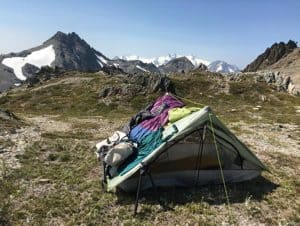
Maybe there are but the mosquitoes are so thick that you can’t bear to be outside?
Put your sleeping bag and extra layers on top of your tent.
This provides excellent insulation from the sun and turns your hot tent into a cool sanctuary.
Bug Protection
If hiking in mosquito territory I wear wind pants & a long sleeve shirt.
I also wear a mosquito head-net.
DEET is an insect repellant most commonly used by backpackers to keep the bugs at bay.
I find it to be pretty TOXIC and personally only use it as a last resort.
Backpacking Permit
Make sure you do your research and find out if a backpacking permit is required for the area you want to hike into.
Permit systems enable areas from becoming overcrowded and abused.
They also let someone know where you will be hiking.
PRO TIP: Many popular destinations have very high demands for a limited number of permits.
Often you can reserve these permits far ahead of time online before there are all spoken for.
Personal S.O.S Device
While this is an optional item for some it’s a necessity for me.
This video goes over the details about my Garmin inReach Mini.
PRO TIP: If you do decide to get a personal rescue beacon…
Get one with satellite texting abilities.
This is essential for letting someone know exactly what the emergency is.
You’re also not left wondering if help is actually going to show up once you set off the S.O.S.
Hygiene Items
You might want a few or all of these:
- Hand sanitizer
- Toilet paper & sealable bag to pack it out
- Toothbrush
- Toothpaste
- Floss
- Menstrual products
PRO TIP: This one is for the Ladies.
Think about using a Pee-Kerchief.
A small reusable cloth that you can clip to the outside of your bag between uses.
My partner has been going this route and LOVES the fact that she doesn’t have to pack out all of the extra toilet paper.
Trekking Poles
These are a MUST for me.
Benefits of trekking poles
- Relieve up to 30% of the pressure of your joints, especially while hiking downhill.
- Aid in balance.
- Can be used to dig cat holes.
- Can also be used to set up certain shelters.
Optional Items
I consider these Items to be essential if the right conditions present themselves.
- Bear Spray
- Ice Axe
- Microspikes
I only carry bear spray in grizzly bear territory.
Luxury Items
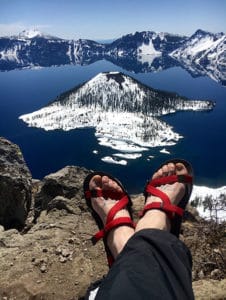
Most hikers like to bring a few luxury Items to add to the experience.
Your Items could be much different than mine.
Always in my bag:
- Blow up Sea to Summit pillow
- Camera gear
- Kindle
- External charger+cords
- Therm-a-rest Z-Seat
Sometimes in my bag
- Camp sandals
- Luci blow up light
- Fishing gear
- Jet boil frying pan
- lightweight grill to cook over a fire
- Mora Light My Fire knife
- Sea to Summit cup
- Hammock
PRO TIP: Always remember to leave no trace and take care of the land.
Learn more about proper LNT principals.
Happy Trails my Friends!
My only comment is for the menstrual stuff- I’d recommend a Diva cup/menstrual cup for any long distance hikers! Its lightweight, can be worn for long periods of time. You just dump it, rinse it, put it back and theres no tampons or pads to deal with.
Thats a good call,
My partner uses a Diva Cup.
I’ll be sure to talk about that on the next update of this post.
Thanks for the insight. 🙂
I always bring a Sam Splint in my first aid kit. I haven’t needed it yet, but on the day you or a friend needs it you’ll be glad to have it.
Hey Jesse,
That sounds like a solid move. Safety first. 🙂
Fantastic information! Many thanks. I keep denture tablets around to sanitize my water bottles. 1/4 tablet does the trick. I pour out and into another cup to soak my toothbrush after trips.
Thanks so much, Alan.
First time I’ve heard of that tip. Thanks for bringing something new to my attention:)
Iron
So much knowledge about things….and about “now” stuff rather than old outdated gear and so much experience!
Thanks so much for the feedback and kind words. I really hope this guide was helpful:)